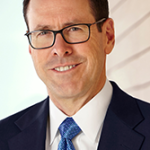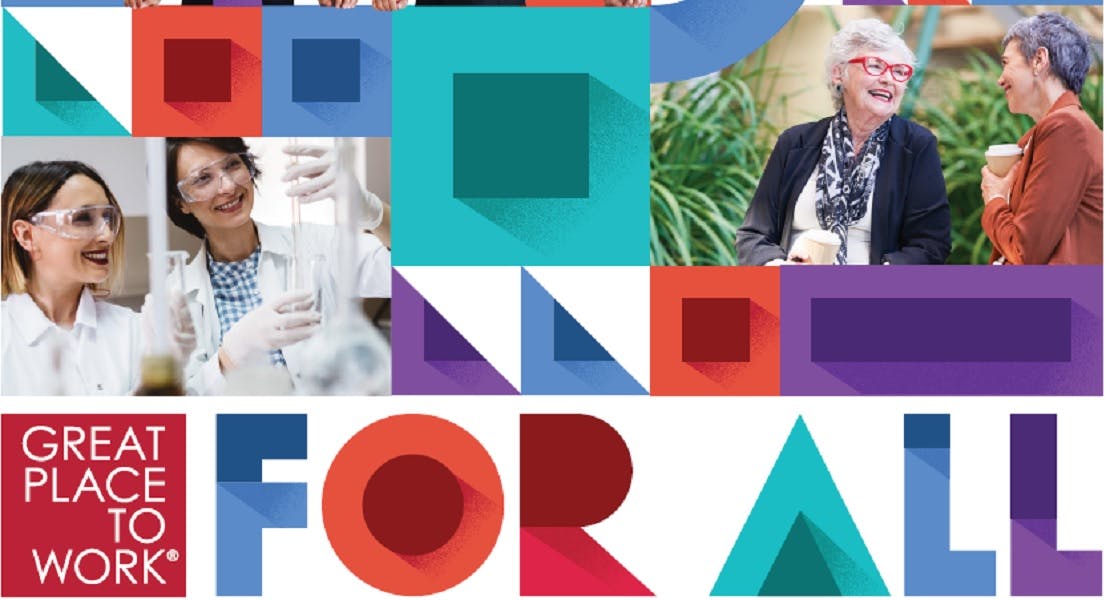Note: The author is employed by O.C. Tanner, which was a sponsor of the conference.
One of the most compelling aspects of the Great Place to Work Conference is how committed every organization on their esteemed lists are to continuing to be an amazing place to work, while also raising the bar and re-inventing what it means to be a great workplace.
This year, a significant addition was made to the conference theme – “For All.”
Diversity and inclusion were front and center, and remarks from the stellar line-up of speakers often included poignant stories about how the journey of building a powerful corporate culture is enhanced when we make certain everyone in the organization is on board and thriving.
My favorite insights
 John Chambers, Executive Chairman of Cisco, made a passionate case for the importance of culture to organizational success – even offering to phone any CEO who isn’t yet a believer! Culture has been the foundation of Cisco’s success, and Chambers confessed that Cisco won’t acquire a company if they don’t have cultural alignment or if their CEO can’t answer detailed questions about their best employees.
John Chambers, Executive Chairman of Cisco, made a passionate case for the importance of culture to organizational success – even offering to phone any CEO who isn’t yet a believer! Culture has been the foundation of Cisco’s success, and Chambers confessed that Cisco won’t acquire a company if they don’t have cultural alignment or if their CEO can’t answer detailed questions about their best employees.
Chambers insisted that CEOs must ‘walk the talk’ by being the biggest champions of protecting and building the culture. And like HR professionals who must begin adapting now to changes likely to occur due to automation and artificial intelligence, CEOs must also continuously look to the future, focus on innovation, and think creatively…. just like a millennial.
 Randall Stephenson, Chairman and CEO of AT&T, shared his best leadership advice: be honest, transparent, and communicate non-stop with employees to help them understand the issues the company is facing and the role they play in those opportunities. Stephenson walked his talk when AT&T converted from landlines to wireless service. While planning the conversion, he realized that none of their employees had the experience or skills that would be needed.
Randall Stephenson, Chairman and CEO of AT&T, shared his best leadership advice: be honest, transparent, and communicate non-stop with employees to help them understand the issues the company is facing and the role they play in those opportunities. Stephenson walked his talk when AT&T converted from landlines to wireless service. While planning the conversion, he realized that none of their employees had the experience or skills that would be needed.
To address the gap, AT&T re-trained over two million employees to prepare them for their new jobs. “We must re-educate and re-skill employees now for future jobs, and this is more than just a model for organizations, but a model for society too,” Stephenson warned.
The challenges of today’s HR
A panel of HR leaders discussed the challenges they face as work is changing faster than people.
 Beth Brooke-Marciniak, Global Vice-Chair, Public Policy at EY encouraged attendees to disrupt themselves before they’re disrupted. Likewise, she said companies need to decide who they want to be as a company and hold firm to those ideals. To live EY’s purpose of “building a better working world,” they hired several retired female Olympians after their research discovered that 90% of women currently in the C-suite played sports in the past. Equally creatively, they’re offering opportunities to autistic candidates with strong math abilities.
Beth Brooke-Marciniak, Global Vice-Chair, Public Policy at EY encouraged attendees to disrupt themselves before they’re disrupted. Likewise, she said companies need to decide who they want to be as a company and hold firm to those ideals. To live EY’s purpose of “building a better working world,” they hired several retired female Olympians after their research discovered that 90% of women currently in the C-suite played sports in the past. Equally creatively, they’re offering opportunities to autistic candidates with strong math abilities.
 Francine Katsoudas, Chief People Officer of Cisco, also encouraged HR leaders to experiment and ‘break’ HR. She warned that leaders shouldn’t be leaders if they aren’t curious about the skills and aptitudes of their employees; and if senior leadership doesn’t live the company’s vision and values, efforts to sustain and scale a thriving organization will be undermined.
Francine Katsoudas, Chief People Officer of Cisco, also encouraged HR leaders to experiment and ‘break’ HR. She warned that leaders shouldn’t be leaders if they aren’t curious about the skills and aptitudes of their employees; and if senior leadership doesn’t live the company’s vision and values, efforts to sustain and scale a thriving organization will be undermined.
 Nancy Vitale, Genentech’s SVP HR, encouraged smart risk-taking, failing fast, and companies taking on some of the roles families used to play – helping people develop values and acting as a stabilizing force in uncertain times. To increase leadership diversity, she insists leaders give job training and experiences to women so they can move into broader roles.
Nancy Vitale, Genentech’s SVP HR, encouraged smart risk-taking, failing fast, and companies taking on some of the roles families used to play – helping people develop values and acting as a stabilizing force in uncertain times. To increase leadership diversity, she insists leaders give job training and experiences to women so they can move into broader roles.
- C
 orey Anthony, SVP HR & Chief Diversity Officer at AT&T, was also sensitive to the blurred line between work and personal lives and suggested it’s unrealistic to think business goals can be met if leaders don’t help employees address and deal with problems. He was optimistic that if HR shows evidence they know the business as well as anyone else, they’ll be viewed as strategic partners and invited to the table.
orey Anthony, SVP HR & Chief Diversity Officer at AT&T, was also sensitive to the blurred line between work and personal lives and suggested it’s unrealistic to think business goals can be met if leaders don’t help employees address and deal with problems. He was optimistic that if HR shows evidence they know the business as well as anyone else, they’ll be viewed as strategic partners and invited to the table.
A version of this post appeared on OCTanner.com.
